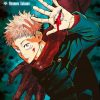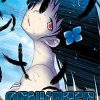Sumo, volleyball, rugby, swimming, soccer, boxing, figure skating … The field of sports manga, or supokon, is a wide one. With shared themes of hard work, perseverance, and team spirit, sports manga are definitely wrapped in typical shonen codes, but they are far from being confined to the genre. Thanks to their relatable themes and interesting approach to the popular subject of sports, supokon generally reach large audiences. If the most popular manga genres are usually adventure or action, sports manga are not far behind on the list. Today, dear reader, we have the pleasure of talking about sports, manga, and so, supokon.
Sport for sport’s sake
Sports manga such as Haikyu, Kuroko’s Basketball or Slam Dunk are often hommages, sublimating a specific sport through a manga format. These stories are often told from the persepctive of a single main character, with a story that reflects shonen values (again, team work, perseverance in the face of adverstity, etc.). These works highlight their chosen sport, and complement the protagonist’s competitiveness and player life with everyday dilemmas about friendship, school life, and romantic situations.
Slam Dunk for example, begins with a tale of romance and heart-fluttering emotions. Hanamichi Sakuragi, red-haired, rebel thug in his spare time, enlists in his school’s basketball club in order to attract the attention of his crush, the beautiful Haruko. This “notice-me senpai” debut leads us into the hero’s difficult first steps into the world of basketball. It is thanks to the power of love, which is stronger than anything else, that our hero will find the strength to persevere in this new athletic path. Despite a catastrophic start, Sakuragi will throw himself headlong into the challenge which will quickly develops personal stakes and eventually becomes a genuine passion. Slam Dunk‘s mangaka, Takehiko Inoue, uses his gifted pen and ingenuity, to break the codes of the genre and brilliantly manage the merge of two shonen sub-genres: supokon (sports manga) and furyo (thug manga). Slam Dunk, through its originality, its clever mix of humor and action, and of course, Inoue-sensei’s technical mastery, has gained the reputation of ultimate sports manga.
A real classic in the making, you can’t miss this other gem: Haikyu!!.
Haikyu!! has nothing to envy its predecessors, and is filled to the brim with uncontrollable energy and innovative ideas. Completed in 2020 at 45 volumes, Haikyu!!’s representation of volleyball has had both literary and societal impact, with the popularity of the manga succeeding in partially restoring the image of the sport in Japan.
Incredible, dynamic visuals, impressive sylistic effects and a unique main character, Haikyu!! has it all. Indeed, Haruichi Furudate’s volleyball manga has firmly settled in the pantheon of supokon must-haves.
Haikyu!! follows young Hinata, who at his small height of 5’4 ’’, is determined to shine in the world of volleyball. Once registered with his school club, he meets Kageyama, another club rookie. This unlikely duo opposites will have to find common ground and cooperate in order to achieve their goals. What makes Haikyu!! so strong is the development of its secondary characters, bringing and importance and depth to the story that makes Haikyu!! so fun and immersive.
Sports: a vector of happiness!
There also exists a particular type of darker, more adult supokon that intersects with the seinen genre, and features a more serious, mature setting. In these manga, sports are no longer a simple leisure activity, but a means for the hero to change their lives, and to lift themselves out of difficult situations. Often dealing with serious themes related to drugs, misery, poverty, abuse, the criminal underworld, sports are a vector for happiness and a means to forge a better life. At least that’s what we can find in Rikuou or Shamo.
In Rikudou: from a young age, little Riku has always been in trouble. Father in debt to a yakuza, junkie prostitute mother, our hero was unfortunately born into the wrong family. Following the suicide of his father, Riku is found by a former boxer turned debt collector, Kyosuke Tokorozawa, as the child rages on the corpse of his father. Tokorozawa then discovers with horror that Riku’s mother is living with a drug dealer as violent as he is sadistic and is quite unable to take care of her son. After the dealer mistreats his mother in front of him, Riku kills him with an ashtray. I warned you: it’s dark!
Riku asks Tokorozawa, ruthless and unscrupulous, to train him in boxing with the goal of reach the national tournament. Rikudou is imbued with a pessimism and general disinterest in everything unrelated to boxing. This excessively bitter story will offer a new path for our traumatized, rage-filled hero. Boxing becomes a way to vent his anger and express what he feels. But it is through the people he meets in the sport that Riku will discover himself and finally give himself the authorization to be happy.
Approaching a substantially similar theme but from a different perspective comes Nakata Haruhisa’s masterful Levius. Levius places us in a techologically advanced post-war context where we follow our eponymous hero wounded both psychologically and physically. The repercussions of the war have been painful for our hero: his mother hospitalized and an amputee himself.
But the end of the war has also brought forward a technological boon that allows humans robotic enchanchements, the ability to transform into a cyborg. This lead to the birth of a new sport, mechanical boxing. Much more violent than its original counterpart, mechanical boxing is also bathed in clandestine betting, in the criminal underworld and corruption. Levius seems born to enter the ring. At the crossroads between cyborgs and boxing fights, Nakata Haruhisa succeeded with Levius in combining two genres: science fiction and sports manga.
Parasports
Less approached in the world of supokon are parasports, which feature characters who have suffered an accident which made them physically disabled. There are still some notable entries in this subgenre.
Best-known is probably Real, by Takehiko Inoue, who as we mentioned, is also the creator of Slam Dunk. Protagonist Nomiya loses function in his legs during a motorcycle accident, and must stop his passion for basketball. But, his interest is rekindled when during a walk, he meets a boy in a wheelchair who is training for basketball and decides to 1 v 1 him.
From his crushing defeat will immerse the beginning of a magnificent friendship and a deep inerest in the world of para-basketball.
We also follow a second character Takahashi, who is paralyzed from the waist down. Eternal rival of our protagonist, Takahashi will also have to find the strength to overcome his trauma. This manga with complex relationships and a harsh themes is a real writing masterpiece.
Let’s leave Real‘s sidelines to look at another manga in the parasports umbrella. Still unreleased in English, Blade Girl offers us a very particular approach to parasports and handicap. This manga with a distinct shojo style appearance follows Rin, following a leg amputation. Rin finds it difficult to come to terms with her new condition, and it is in running that she will find the comfort and help she needs.
Visiting a sports center for the disabled, our young Rin, uneasy, will meet two very inspiring characters for her. The first is an engineer who explains how running blades work, the second a runner who instills in her a passion to run. From these two meetings will be born a new disproportionate dream for our amputee: to participate and win the Paralympic Games. This manga echoing the Olympic and Paralympic Games which were supposed to take place in Tokyo in 2020, brings a delicate touch to the theme.
Blade Girl revolutionizes the perception of parasports through its personal approach to the subject. The story revolves around the reappropriation of one’s body following an important trauma. As Rin gradually trusts her own body of again, she transforms a perceived weakness into her strength.
To conclude, sports manga are only increasing in popularity, thanks to the appearance of manga such as Eyeshield 21, Slam Dunk, Kuroko’s Basketball or Haikyu!!. It seems that supokon has a bright future ahead. So what’s the nextbig hit? Keep an eye out for Blue Lock, for examples, a cool, sleek title that plays with the codes of the sports genre. It is precisely this literary versatility will be the key for supokon to continue to shine.
🏀 David’s Column – 1st of June 2021 🏀
The Author
Browse the blog
Latest posts
- Read more >
BEASTARS
21 March 2022 - Read more >
JUJUTSU KAISEN
21 March 2022 - Read more >
ATTACK ON TITANS
21 March 2022









